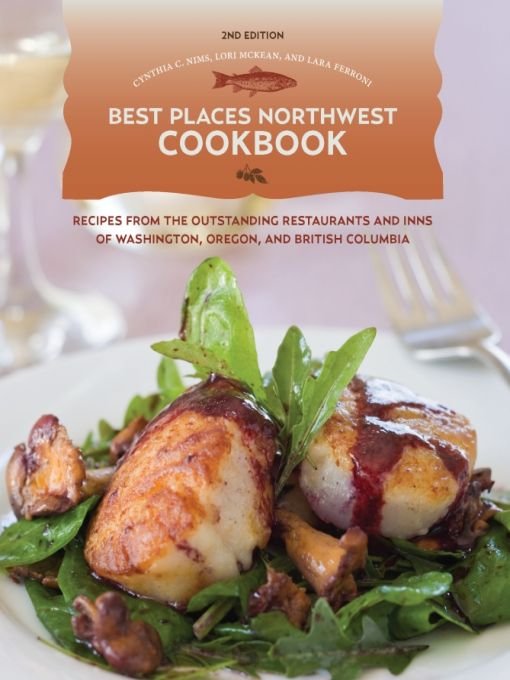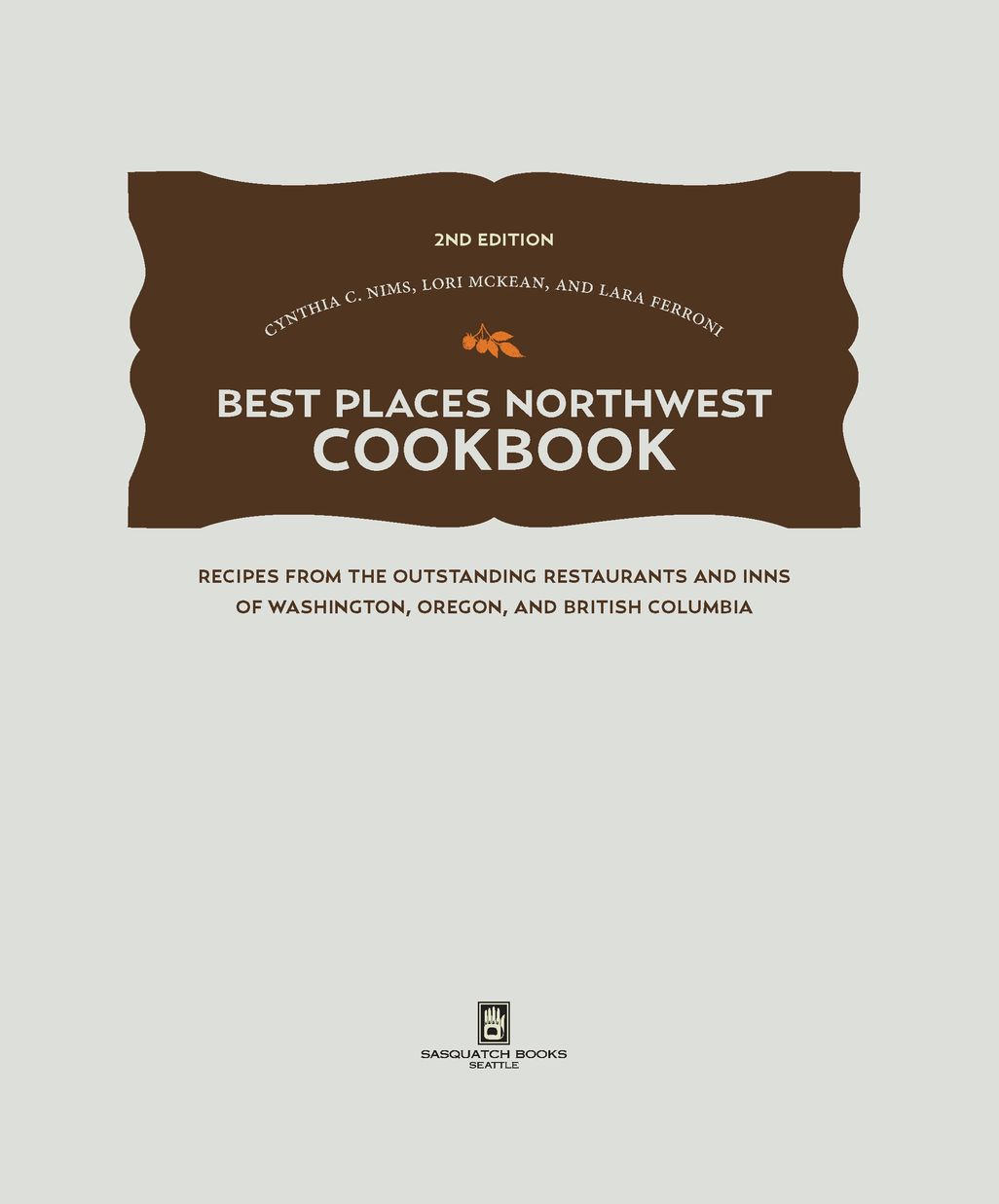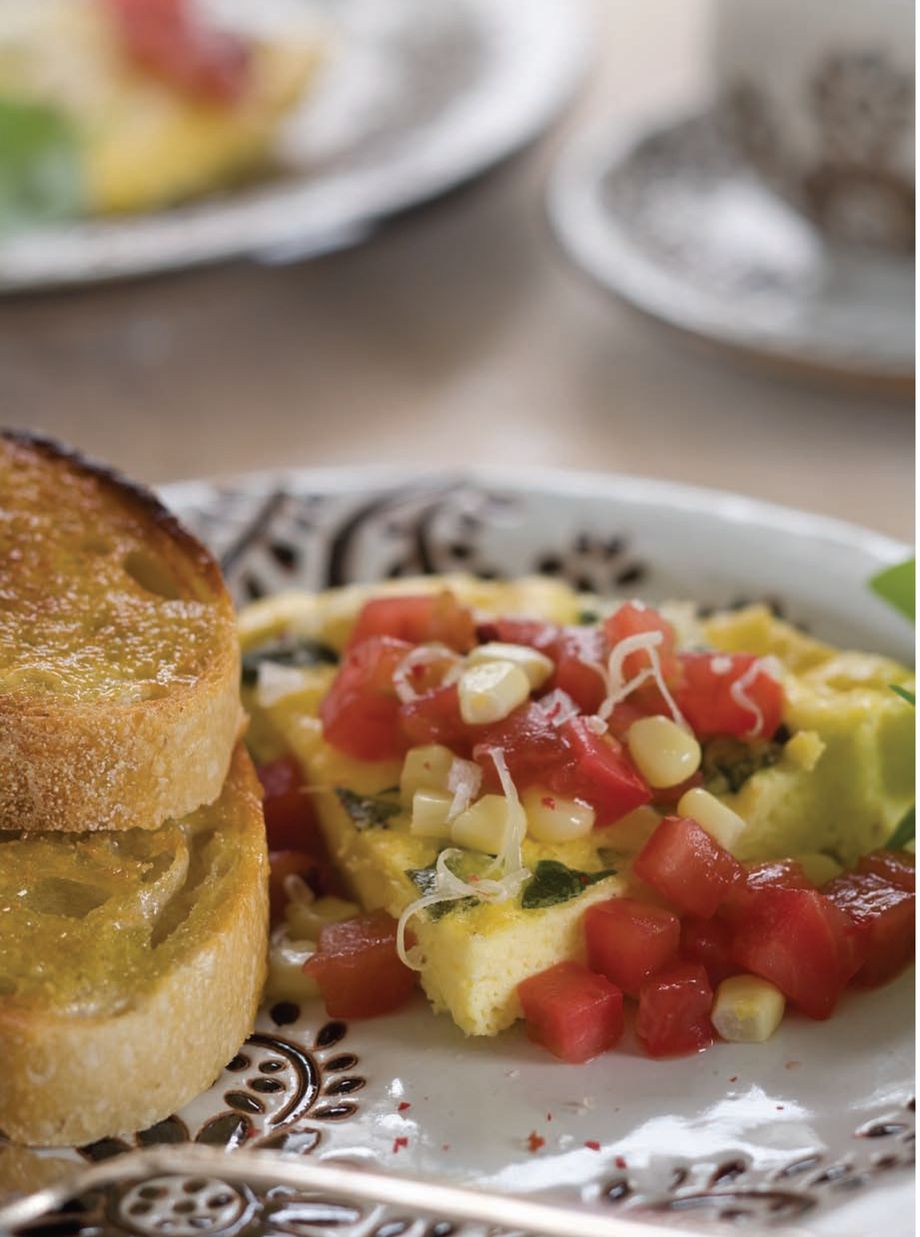Table of Contents
introduction
Updating such a classic cookbook as The Northwest Best Places Cookbook was a challenge. Some of the contributing restaurants have closed shop or have gone through major changes and are no longer included in the Best Places guidebooks. Hundreds of new restaurants have sprouted up to take their places, bringing their own fresh interpretations to Northwest cuisine. How do you balance those classic recipes with new ones that represent the current tastes without losing something in the process?
In fact, the dining scene of the Pacific Northwest has grown up since the original publication of what was The Northwest Best Places Cookbook. The region has become a major influence in the culinary arts on a national level, bringing to light the importance of eating seasonally, organically, and locally. Oregons organic certification program has set the new standard for what it means to be truly organic, and restaurants like Maria Hines Tilth (only the second restaurant to achieve the certification in the country) rise to the occasion with dishes we all feel good about eating, not only because they are beneficial to the earth, but also because they are truly delicious. The 100-mile diet, started in Vancouver, British Columbia, has raised the level of discussion in the Northwest and around the country about what it means to eat locally. This new consciousness changed the way we think about where our food comes from and the personalities behind it.
Looking back though, the ideas that are now at the forefront of food politics still hold to the same principles that made Northwest cuisine something weve always celebrated: fresh, seasonal foods creatively prepared to a delectable end.
To create this second edition weve trimmed down a few of the recipes to best represent todays dining landscape and have added thirteen new recipes from some of the most highly regarded restaurants in the region. The collection is as diverse as ever, featuring the classic ingredients weve always known and loved, and pairing them with some new and unexpected items that are sure to surprise and delight.
Lara Ferroni
May 2009
breakfast
four seasons baked eggs
AMYS MANOR BED & BREAKFAST  PATEROS, WASHINGTON
PATEROS, WASHINGTON The 170-acre estate at Amys Manor includes a farm with chickens, rabbits, and an organic garden. Breakfasts at the inn always showcase farm-fresh ingredients, which, like this recipe, change with the seasons. Be sure to try your own adaptations, using seasonal vegetables and herbs from your garden or neighborhood market.
8 eggs
cup half-and-half
cup sour cream
cup grated sharp cheddar cheese
Salt and freshly ground black pepper
1 tablespoon unsalted butter
Herb sprigs, for garnish
Spring
2 cups coarsely chopped arugula, spinach, and/or red mustard leaves
1 tablespoon minced chives
Summer
Kernels from 1 ear fresh sweet corn
8 large basil leaves, finely shredded
1 vine-ripe tomato, cut into -inch slices
Fall
1 medium russet potato, scrubbed and cut into -inch dice
2 teaspoons fresh thyme leaves
teaspoon dried red pepper flakes
Winter
pound pork sausage
1 teaspoon dried sage leaves, crushed
PREHEAT THE OVEN to 350F.
LIGHTLY WHISK TOGETHER the eggs, half-and-half, and sour cream. Stir in the cheese with a pinch each of salt and pepper. Place the butter in a heavy, ovenproof 10-inch skillet, preferably nonstick, and heat in the oven until melted, about 5 minutes.
Take the pan from the oven and swirl the butter evenly over the bottom of the pan. Add the egg mixture and bake until the eggs are just set but still moist, 20 to 25 minutes. Let cool for a few minutes, then slide the eggs onto a cutting board and cut into wedges. Arrange the wedges on a serving platter or individual plates, garnish with herb sprigs, and serve.
spring eggs
AFTER HEATING THE PAN with the butter, remove it from the oven and add the greens. Toss until wilted, then pour the egg mixture on top, sprinkle the chives over the eggs, and continue as directed in the base recipe.
summer eggs
AFTER HEATING THE PAN with the butter, remove it from the oven and add the corn. Toss until evenly coated in butter. Stir the basil into the egg mixture, then pour it into the pan. Continue as directed in the base recipe, arranging the tomato slices over the eggs after about 15 minutes of baking.
fall eggs
PLACE THE POTATO in a small pan of lightly salted water, bring to a boil, and cook until nearly tender, 5 to 7 minutes. Drain well.
AFTER HEATING THE PAN with the butter, remove it from the oven and add the diced potato. Toss until evenly coated in butter. Stir the thyme leaves and red pepper flakes into the egg mixture, then pour it into the pan. Continue as directed in the base recipe.
winter eggs
COOK THE SAUSAGE in a small skillet over medium heat, breaking it into small pieces, until no pink remains, about 10 minutes. Drain well, discarding the fat. Stir the sausage and sage into the egg mixture, pour it into the preheated pan, and continue as directed in the base recipe.
MAKES 6 SERVINGS
artichoke souffls
THE BEACONSFIELD INN  VICTORIA, BRITISH COLUMBIA
VICTORIA, BRITISH COLUMBIA Souffls have a reputation for being fussy and difficult to prepare. But not these. Baked in individual -cup ramekins, they puff to a golden brown when cooked. Made in larger portions, they would also make a delicious lunch.
6 eggs
teaspoon hot pepper sauce
cup flour
Pinch freshly ground nutmeg
1 cups milk
1 can (14 ounces) artichoke hearts, drained and coarsely chopped
1 cup grated fontina cheese
1 cup grated cheddar cheese
cup chopped green onion or chives
PREHEAT THE OVEN to 350F. Lightly grease eight -cup ramekins.
WHISK TOGETHER the eggs and hot pepper sauce in a large bowl until blended. Add the flour and nutmeg and mix well. Whisk in the milk, then stir in the artichoke hearts, cheeses, and green onion. Spoon the mixture into the ramekins, filling them to about inch below the rim. Set the ramekins on a baking sheet and bake until puffed and nicely browned, 45 to 50 minutes. Serve immediately.
MAKES 8 SERVINGS
dungeness crab quiche
GROVELAND COTTAGE
SEQUIM, WASHINGTON
Sweet, meaty Dungeness crab is the house specialty at this bed-and-breakfast located on Dungeness Way in Dungeness, a small fishing village on the Strait of Juan de Fuca. In addition to crab, this recipe calls for chanterelle mushrooms, but you can substitute common button mushrooms if wild mushrooms are not available.







 PATEROS, WASHINGTON
PATEROS, WASHINGTON VICTORIA, BRITISH COLUMBIA
VICTORIA, BRITISH COLUMBIA SEQUIM, WASHINGTON
SEQUIM, WASHINGTON